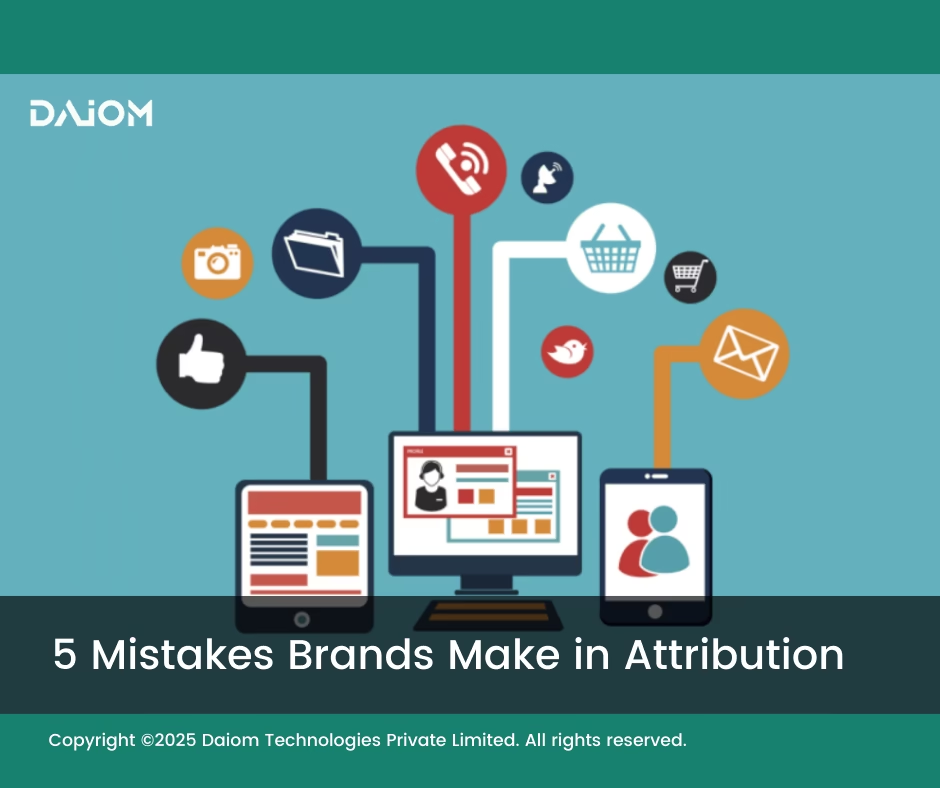Brands spend a lot of money on marketing. But many still don’t know which part of that spend is actually working.
Moreover, John Wanamaker once said, “Half the money I spend on advertising is wasted; the trouble is, I don’t know which half.”
That’s exactly the challenge attribution tries to solve.
Attribution means finding out which marketing activities, like ads, emails, or videos, help bring in customers. It could be tracked through a simple tool like a UTM link, a coupon code, or a phone number. These help connect the campaign to the customer.
Attribution became more important as digital marketing grew.
Today, about 70% of marketing budgets go to digital channels. These campaigns create a lot of data, which helps us see what’s working.
It has also made campaigns far more trackable. But just having data doesn’t mean you’re making the right decisions. With the right tools, you can measure exactly what’s working and what’s not.
Most customers don’t buy after seeing just one thing. They move across 7 to 8 different channels—maybe they see your ad on Instagram, search for you on Google, read a blog, or visit your store after an email. So which of these actually made them decide to buy?
That’s what attribution helps you figure out.
Read more – Mastering Marketing Attribution: A Guide to Optimizing Your Campaigns
It answers simple but important questions like:
- What’s working in our marketing?
- Which channel brings in the most customers?
- Where are we wasting money?
- How can we spend smarter?
But even though attribution is powerful, many brands still get it wrong. In this blog, we’ll look at the 5 big mistakes brands make in attribution—and how you can avoid them to make better decisions and grow your business.
"Attribution isn’t about giving credit — it’s about finding the truth."
Neil Hoyne, Chief Strategist at Google
Table of Contents
- Why Attribution Matters More Than Ever?
- 5 Most Common Attribution Mistakes
- Why Attribution is Not So Easy?
- Measuring Beyond Sales: The Role of L1 KPIs
- Conclusion
1. Why Attribution Matters More Than Ever?
Marketing is no longer just about getting attention — it’s about proving impact.
Today’s customers jump between Instagram ads, Google searches, YouTube videos, emails, and even physical stores before buying. As marketers, you need to answer one crucial question:
Which of these touchpoints actually influenced the sale?
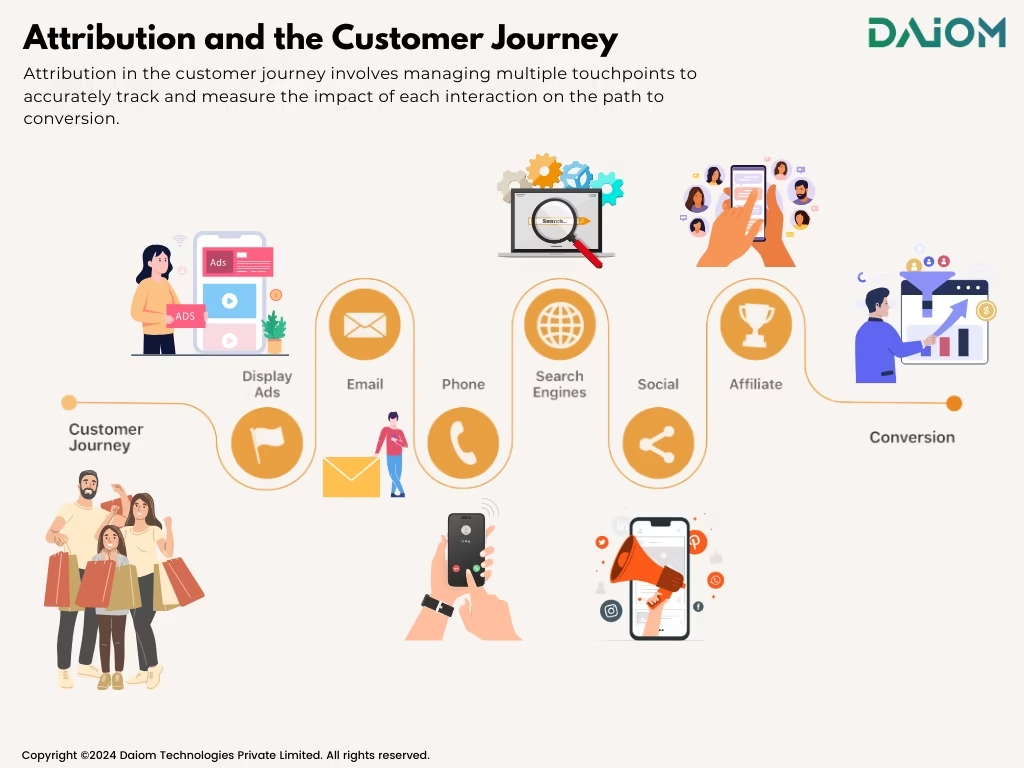
This is where marketing attribution comes in.
Attribution helps you:
- Understand which campaigns drive results
- Allocate budgets more wisely
- Optimize customer journeys
- Improve ROI and team performance
1.1 Where Does Attribution Get Tough?
Attribution sounds simple in theory, but in practice, it gets tricky sometimes.
One of the biggest challenges is when the customer journey is cross-device or offline.
For example, a customer might first see an ad on their phone, later browse the website on a laptop, and finally walk into a store to make a purchase. If your brand is mostly offline and not fully integrated across touchpoints, tracking that full journey becomes difficult.
In such cases, attribution can miss key parts of the customer journey, leading to incomplete or misleading insights.
2. 5 Most Common Attribution Mistakes
While almost every brand uses some form of attribution, most are doing it wrong.
Instead of getting clarity, they’re often working with misleading or incomplete data. That’s because marketing attribution is complex. It’s easy to fall into traps—some small, others costly.
These mistakes don’t just affect reports—they directly impact revenue decisions, team targets, and campaign strategy.
Here are the 5 most common attribution mistakes brands make—and how you can fix them.
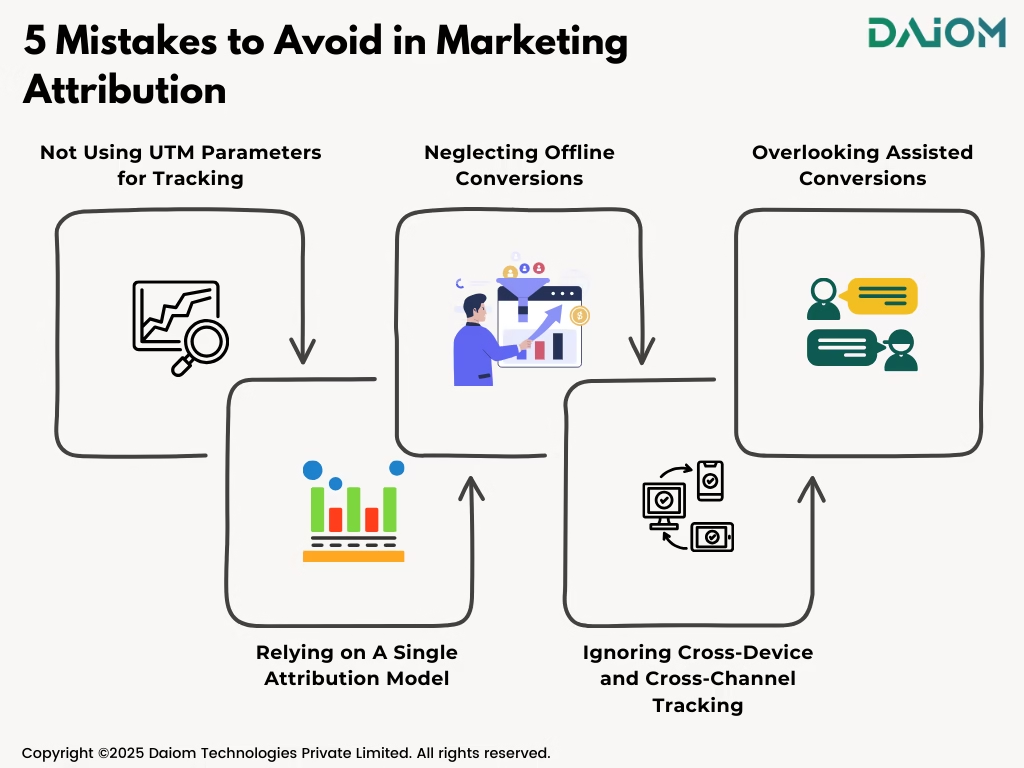
2.1 Not Using UTM Parameters for Tracking
One of the most basic yet most overlooked mistakes in attribution is not setting up UTM parameters.
UTMs are simple tracking codes added to URLs. They help you see exactly where your traffic is coming from, whether it’s a LinkedIn post, a newsletter, a Google ad, or a WhatsApp message.
Why is this a mistake?
Many brands skip this step, assuming analytics tools will pick up the source automatically. But without proper UTMs, most traffic ends up in the dreaded “Direct” or “Other” bucket, giving you zero clarity on what actually drove that visit or conversion.
Even though UTMs are foundational, we’ve seen many brands, even well-established ones, running paid campaigns or influencer collaborations without them. This results in loss of visibility, making it nearly impossible to attribute performance accurately.
What should brands do instead?
- Set UTM parameters as a non-negotiable part of every campaign launch. Create clear naming conventions for source, medium, and campaign.
- Use tools or spreadsheets to manage them consistently.
UTMs might seem small, but they’re the first building block of strong attribution.
If you don’t start with clean tracking, everything else gets blurry.
Read more – The Foundation Of Marketing Attribution: Understanding UTM Parameters
2.2 Relying On A Single Attribution Model
One of the most common mistakes is using only one attribution model, typically first-touch or last-touch.
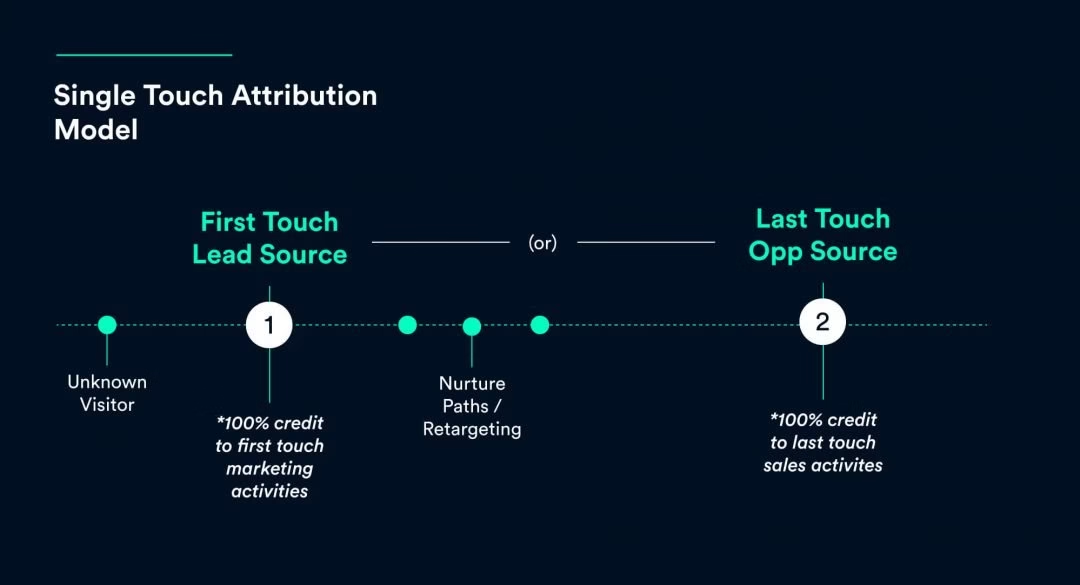
Using only a single model gives you an incomplete picture. Each model has its own strengths and weaknesses, so combining insights from multiple models provides a more accurate understanding.
Why is this a mistake?
- First-touch models assign all credit to the initial interaction, underrating later impactful touchpoints like remarketing emails.
- Last-touch models focus only on the final interaction before conversion, ignoring crucial early engagement like awareness or consideration channels.
Also, different types of communication work better with different models.
For example, retention campaigns often perform well under last-click models, since they aim to drive immediate action from existing customers.
On the other hand, brand awareness campaigns are better evaluated with first-click models, since they focus on initiating the customer journey.
What should brands do instead?
- Experiment with multiple models—linear, time-decay, position-based, or multi-touch—to understand varied touchpoint contributions.
- Align model selection with your marketing goals and customer behavior. If your sales cycle is long or multi-step, multi-touch attribution often provides more accurate guidance.
2.3. Ignoring Cross-Device and Cross-Channel Tracking
One common mistake is focusing only on online interactions while ignoring how customers engage across devices and offline channels. Customers interact with your brand across various devices and platforms.
Missing these interactions means you lose critical insights into the customer journey. Cross-device and cross-channel tracking ensure a holistic view of your marketing impact.
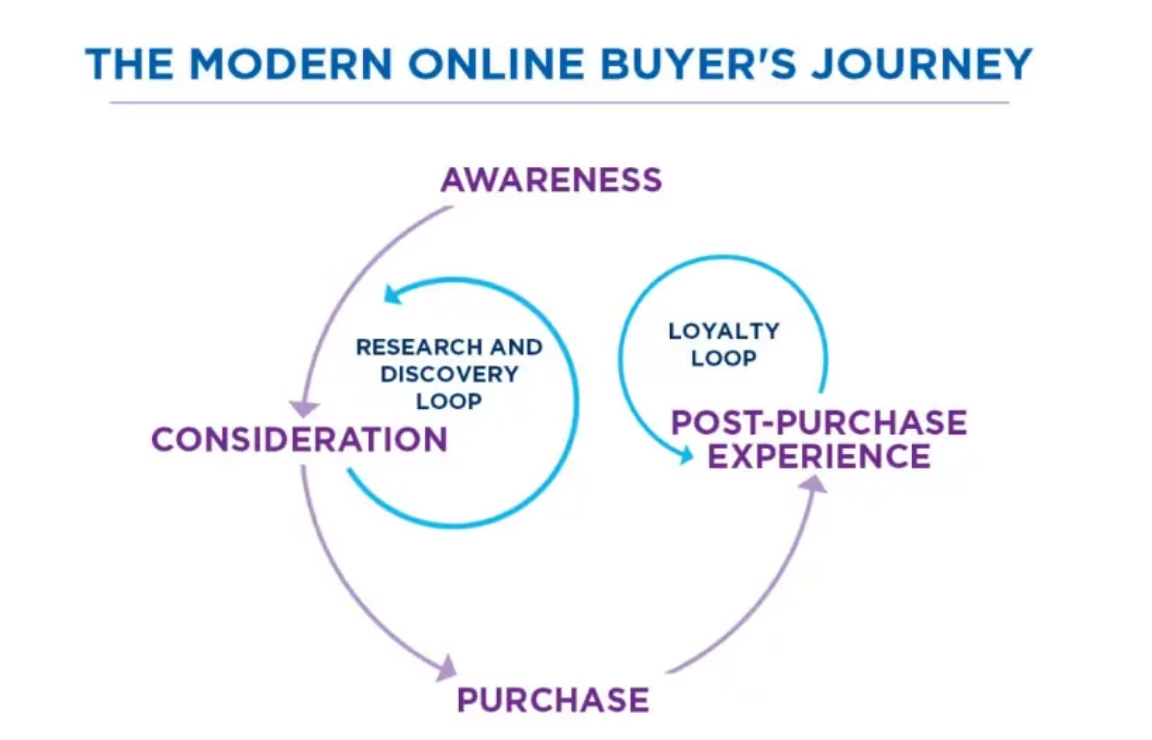
By not tracking these multi-channel behaviors, brands miss out on understanding the full customer journey. This incomplete view can lead to poor targeting, ineffective campaigns, and missed opportunities to connect with customers where it really matters.
Why is this a mistake?
- A user discovers your brand via a mobile ad but buys later on desktop. Without cross-device tracking, the mobile touchpoint is undervalued.
- Offline triggers like events or print campaigns (e.g., billboards or direct mail) might drive online conversions—but are missed unless captured.
What should brands do instead?
- Implement tracking methods such as cookies, device IDs, QR codes, or unique URLs to tie interactions to the same user across devices.
- Use tools like Customer Data Platforms (CDPs) or omnichannel analytics to unify data and measure journeys holistically.
- Incorporate offline activity using surveys (“How did you hear about us?”), UTM parameters for offline ads, or integrated analytics.
2.4. Overlooking Assisted Conversions
One common mistake is focusing only on the last-click or direct conversions—and ignoring the steps that lead up to them.
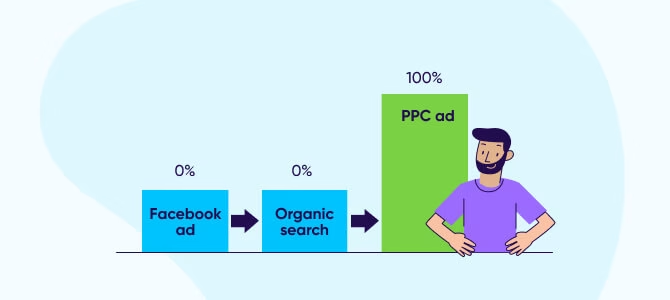
Customers rarely convert after a single touchpoint.
Often, they interact with a brand multiple times across channels—like email, social media, or search—before finally making a purchase.
By not giving credit to these “assist” interactions, brands miss the bigger picture. You might undervalue important channels that influence buyers early in their journey.
Why is this a mistake?
A customer clicks on a promotional email, later sees your brand on Instagram, and finally buys through Google Search. If you only count the last click, email and social media get no credit—leading to poor investment decisions.
What should brands do instead?
- Use multi-touch attribution models that recognize assistive roles played by early interactions.
- Explore tools like Google Analytics’ assisted conversions or attribution modeling reports to see which channels help drive final actions.
2.5. Neglecting Offline Conversions
A major blind spot in digital attribution is ignoring offline touchpoints—like in-store purchases, print ads, TV spots, or call center interactions.
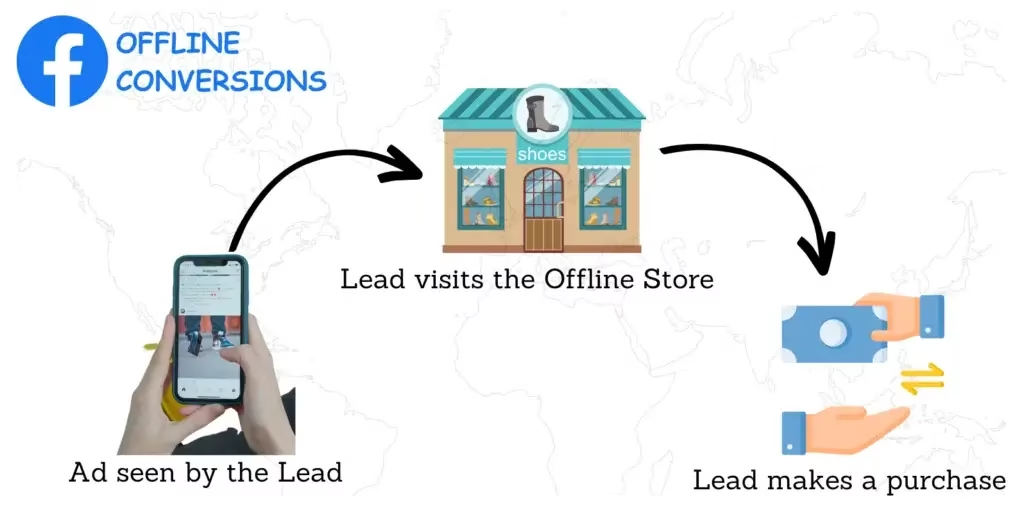
These often drive significant business results, especially for brands with a physical presence.
By excluding offline data, you’re not seeing how your entire marketing mix contributes to conversions.
Why is this a mistake?
A customer sees a newspaper ad and walks into your store to buy. Or they call your helpline after visiting your website. If these interactions aren’t connected, you lose insight into what’s actually working.
What should brands do instead?
- Capture offline conversions using methods like unique phone numbers, in-store QR codes, POS integrations, and survey prompts (“How did you hear about us?”).
- Bridge online and offline data using CRM systems or CDPs that can track users across both worlds.
Read more – Bridging Online and Offline: The Omnichannel Approach
3. Why Attribution is Not So Easy?
One key thing to understand about attribution is that it isn’t easy. It requires sophisticated tools. Simply doing regular attribution without the right tracking setup doesn’t help much.
Great attribution depends on how well you track user actions. Many people obsess over which attribution model to use, but the truth is, your tracking setup plays a much bigger role. Without clean, consistent tracking, even the best model won’t give you useful insights.
Getting attribution 100% perfect is nearly impossible.
But even when it’s not perfect, good attribution gives you a strong directional view of what’s working. It helps you connect campaign objectives with outcomes. And ultimately, attribution is what makes your marketing measurable.
4. Measuring Beyond Sales: The Role of L1 KPIs
Not every campaign will immediately translate into direct sales impact, and expecting that as the only success metric can lead to misleading conclusions. Marketing outcomes often unfold in stages—customers may first engage with the brand, explore the app, or interact with traffic sources before deciding to purchase at a later time.
This is where Level 1 (L1) KPIs become critical.
Instead of attributing success purely to sales, L1 KPIs such as app downloads, website visits, click-through rates, and engagement levels help us understand which campaigns are effectively driving quality traffic and expanding our customer base.
For example, a campaign that generates a significant number of app installs may not show immediate revenue but still creates a pool of engaged users who are likely to return and convert in the future.
By considering both sales and L1 KPIs, we move away from a narrow attribution model and gain a more holistic view of performance. This balanced measurement ensures that we value early funnel indicators—like traffic quality and app engagement—that ultimately feed into long-term growth and repeat sales.
5. Conclusion
With attribution done right, you turn insights into action and growth. A well-rounded approach—using multiple models, tracking cross-channel behavior, and analyzing data regularly provides a clearer picture of what drives results. This enables a brand to make smarter decisions, optimize campaigns, and maximize the marketing ROI.
Also read – https://daiom.in/marketing-attribution-blog/
We have collaborated with over ten brands to improve their attribution. The main key here is that no campaign should go out without proper UTM tracking.
If you’d like to discuss how we can assist with marketing attribution and optimize your marketing strategies, we’re happy to set up a consultation call. Feel free to reach out to us at saurabh@daiom.in
For more insights and updates on the latest MarTech trends, follow DAiOM!
Subscribe to our Newsletter!


